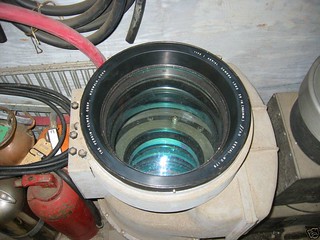Perkin-Elmer

|
| Perkin-Elmer,36inch F401 image by Pearse Stokes (Image rights) |
Perkin-Elmer was an American optical design and consulting company founded in 1937 by Richard Perkin and Charles Elmer.
History
Perkin-Elmer was an American optical design and consulting company founded in 1937 by Richard S. Perkin and Charles W. Elmer.[1] The two met in the 1930s and shared a common interest in astronomy, leading them to go into the optics business together. the company was incorporated in New York in 1939. In 1944 the company also began working in the field of analytical instruments. Starting in 1954, the business operated in Germany as Bodenseewerk Perkin-Elmer GmbH.
Perkin-Elmer designed the optical systems for the classified KH-9 Hexagon reconnaissance satellites, commonly known as Big Birds, that were used by the United States from 1971-1986. The satellites contained a film camera with a 1.5 m, f/3.0 telephoto lens and a secondary, lower resolution film-based mapping camera. After exposure, the film was jettisoned from the satellite in a reentry vehicle that returned the film to Earth for processing.
During the 1960s - 1980s the company designed and built a variety of optical and lens systems for military use including weapons sighting systems, gun cameras, night reconnaissance gear, and camera systems. They provided lenses for the camera systems used in U-2 and SR-71 Blackbird spy planes including huge 36 inch f/4.0 lenses.[2] Strange Perkin-Elmer lenses from this era are frequently found from military surplus vendors and online auction websites.
Ellis Betensky worked for Perkin-Elmer as their senior optical designer prior to forming his own company, OPCON Associates. OPCON's first major project was as a design consultant to Ponder & Best to design their innovative Vivitar Series 1 lenses. Perkin-Elmer was chosen to manufacture the more complex optical designs due to Betensky's past associations with the company. Most of Vivitar Series 1 lenses were manufactured by traditional Japanese lens manufacturers but two, the 600mm f/8 and 800mm f/11 Solid Catadioptric lenses relied on the advanced optical materials and designs that Perkin-Elmer specialized in.
Perkin-Elmer sold the 600mm f/8[3] and 800mm f/11 Catadioptric lenses under their own name as well. These were identical to the OPCON-designed Vivitar Series 1 lenses that Perkin-Elmer manufactured. There is also known to be a Perkin-Elmer 680mm f/12 compact catadioptric lens.[4]
In the late 1970s Perkin-Elmer won a NASA contract to build the optical components of the Hubble Space Telescope, a job that became the company's most famous debacle. Technicians at the company miscalibrated a null corrector, resulting the creation of a primary mirror for the telescope that had significant spherical aberration. A problem that was not discovered until the telescope was in orbit. NASA launched a repair mission that applied corrections to the secondary mirror, leaving the larger, faulty primary mirror in place. A subsequent NASA investigation criticized Perkin-Elmer's management, noting that they had disregarded quality guidelines and ignored test data which showed the mirror to be faulty.[5]
On 28 May, 1999 Perkin-Elmer merged with EG&G, Inc to form PerkinElmer. The new company diversified into a wide range of technology businesses including health, environmental analysis, medical imaging, pharmaceuticals, diagnostics, biotechnology, specialty lighting and sensors.
Notes
Links
- PerkinElmer official website